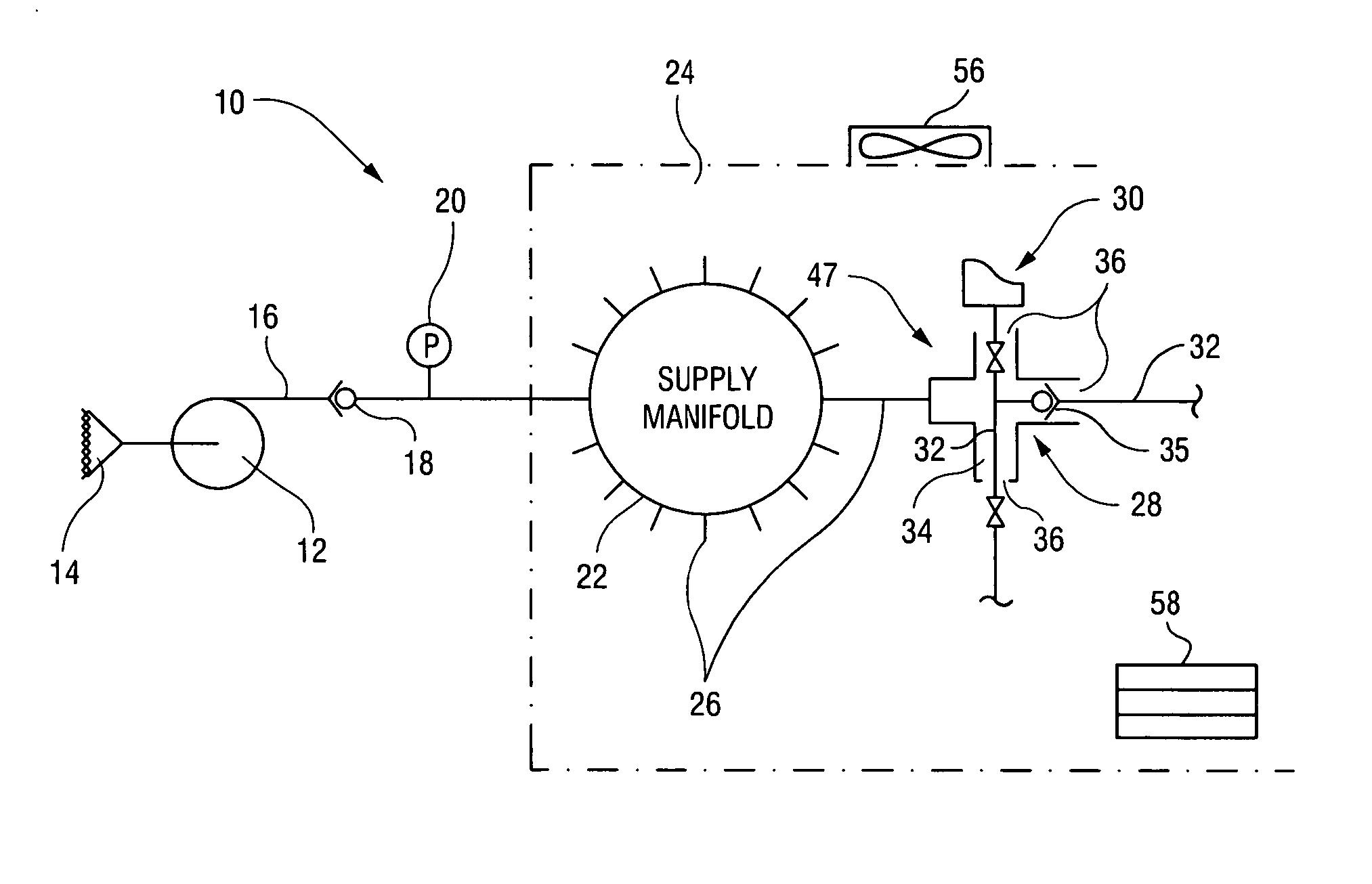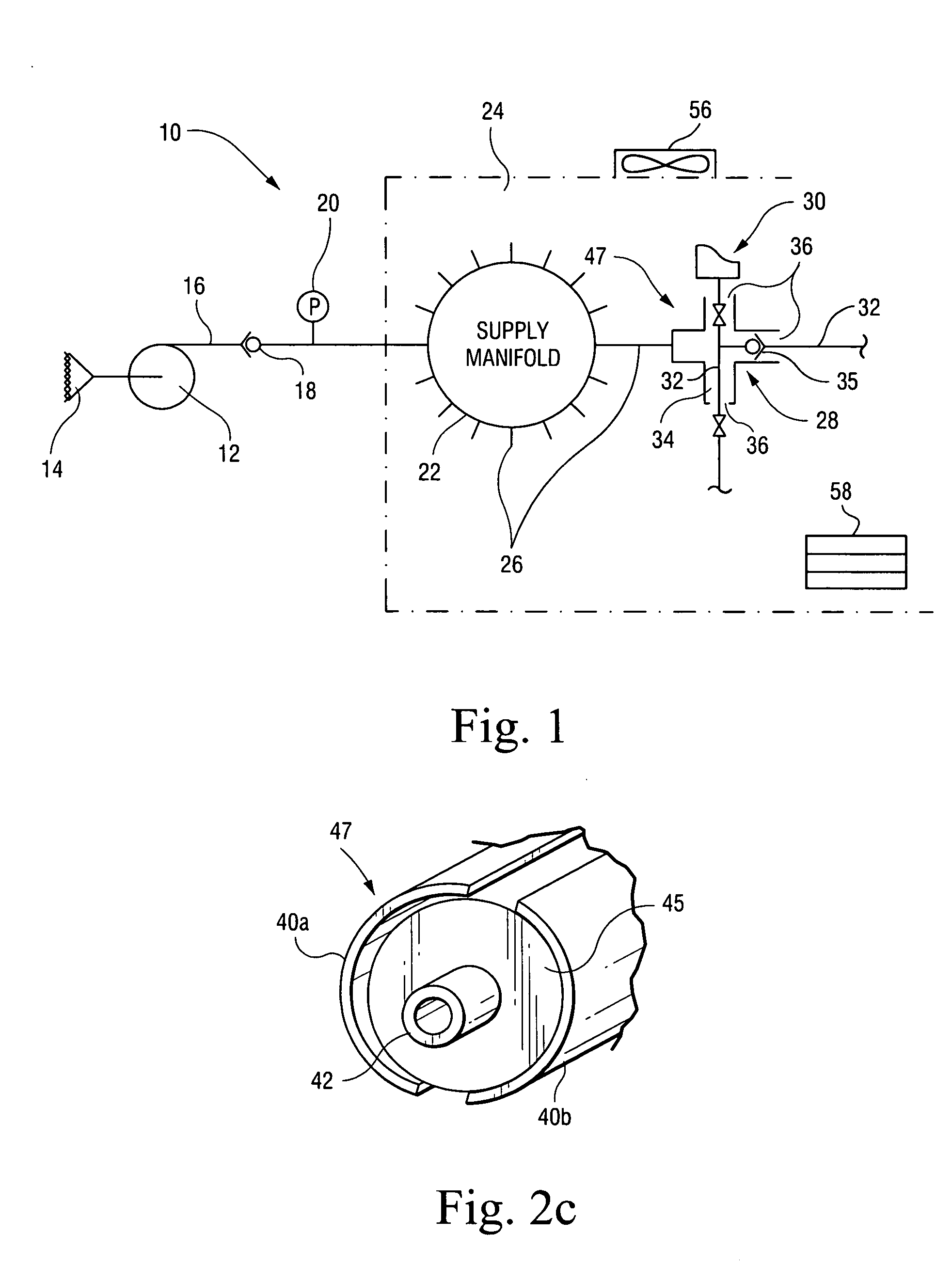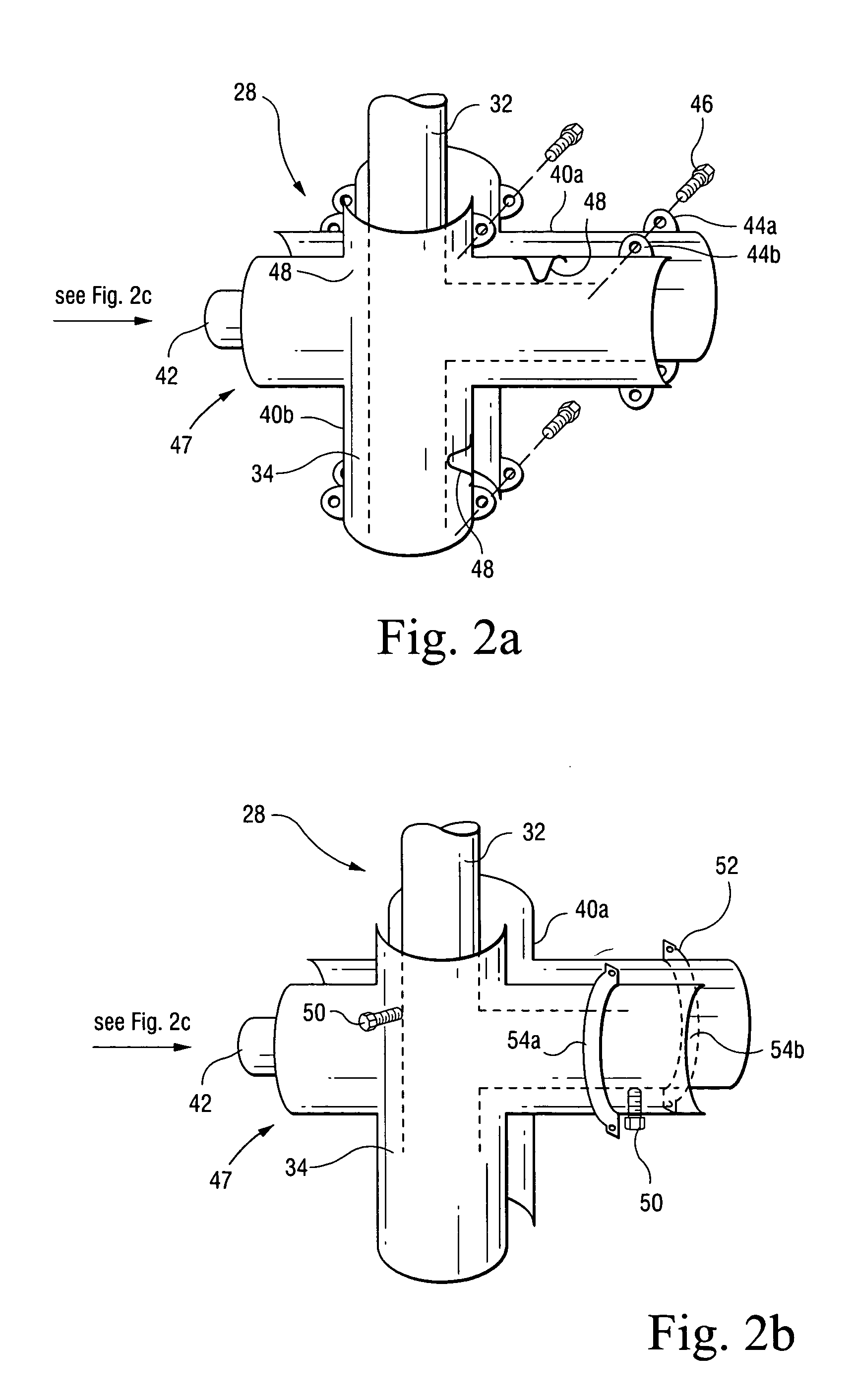Cooling of liquid fuel components to eliminate coking
a liquid fuel component and cooling system technology, applied in mechanical equipment, machines/engines, light and heating apparatus, etc., can solve the problems of inoperable valves, flow restrictions, coke formation in liquid fuel pipes, etc., and achieve the effect of reducing the temperature of fuel oil components
- Summary
- Abstract
- Description
- Claims
- Application Information
AI Technical Summary
Benefits of technology
Problems solved by technology
Method used
Image
Examples
Embodiment Construction
[0016]FIG. 1 illustrates an exemplary embodiment of a system, in accordance with the present invention, for eliminating coking by air cooling gas turbine liquid fuel components located in a high temperature environment. The cooling system 10 shown in FIG. 1 uses a high pressure motor driven blower 12 to draw in the required volume of cool ambient air at atmospheric conditions through a screened inlet air silencer 14 and to boost the pressure of such ambient air to overcome system resistance. The pressurized air flows through a first conduit or tube preferably in the form of a supply header 16. A backdraft damper 18 in supply header 16 prevents backflow when system 10 is not operating. A pressure switch 20 signals loss of air flow.
[0017] Supply header 16 leads to a supply manifold22 located within the turbine's enclosure 24. Extending from supply manifold 22 are a plurality of additional or second conduits preferably in the form of a plurality of individual supply tubes 26, one for ...
PUM
 Login to View More
Login to View More Abstract
Description
Claims
Application Information
 Login to View More
Login to View More - R&D
- Intellectual Property
- Life Sciences
- Materials
- Tech Scout
- Unparalleled Data Quality
- Higher Quality Content
- 60% Fewer Hallucinations
Browse by: Latest US Patents, China's latest patents, Technical Efficacy Thesaurus, Application Domain, Technology Topic, Popular Technical Reports.
© 2025 PatSnap. All rights reserved.Legal|Privacy policy|Modern Slavery Act Transparency Statement|Sitemap|About US| Contact US: help@patsnap.com



